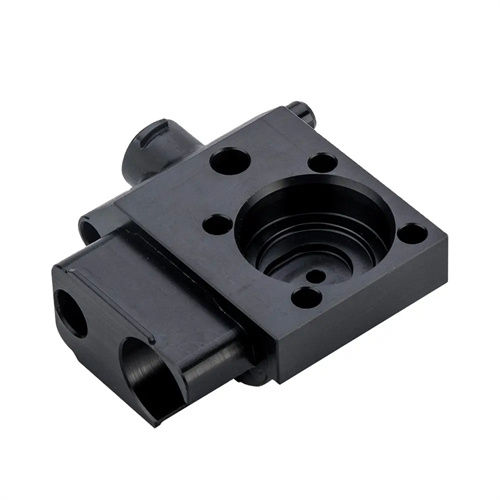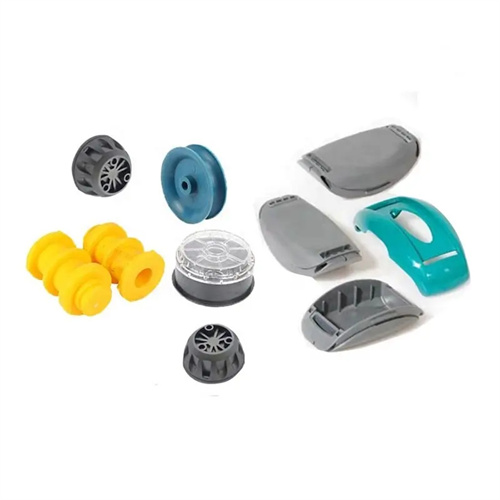In injection molding, push rods and push tubes are not only important demolding components, but their rational design also directly affects the effectiveness of gas discharge within the mold cavity. Traditional concepts often overlook the exhaust function of push rods and push tubes. In fact, by providing specific structures on push rods and push tubes, they can effectively assist in the discharge of gas deep in the mold cavity or in complex structures, compensating for the shortcomings of traditional exhaust grooves. The clearance between the push rod and push tube and the mold, as well as the internal structural design, will affect the exhaust efficiency. If improperly designed, not only will exhaust be impossible, but it may also become a dead corner where gas accumulates, resulting in defects such as material shortages and burning in the plastic part. For example, when producing plastic parts with elongated holes, if the push rod located in the hole does not have an exhaust function, the gas at the bottom of the hole cannot be discharged, forming bubbles or depressions. Push rods with exhaust structures can reduce the incidence of such defects by over 80%.

The exhaust design of the push rod should be considered comprehensively, taking into account its structural characteristics and installation location. The most common method for push rod exhaust is to utilize the clearance between the push rod and the mold plate. This clearance is typically controlled at 0.01-0.03mm. This gap allows gas to pass through while preventing the plastic melt from escaping. To enhance exhaust efficiency, an annular exhaust groove with a width of 0.5-1mm and a depth of 0.02-0.05mm can be created at the end of the push rod that contacts the plastic part. This groove allows gas to enter the clearance between the push rod and the mold plate and be discharged. For push rods with larger diameters (greater than 10mm), an axial exhaust hole with a diameter of 3-5mm can be created inside the push rod. One end connects to the mold cavity and the other to the mold’s exhaust channel, creating an efficient exhaust path. For example, when producing large plastic gear parts, the center push rod features an internal exhaust hole to quickly exhaust gas from the tooth root, preventing incomplete tooth shape caused by gas stagnation.

The design of a push tube’s venting system is more complex than that of a push rod, as it requires consideration of both internal and external gas venting. The clearances between the push tube and the core, as well as between the push tube and the mold plate, can serve as venting channels, with the same clearances controlled within a range of 0.01-0.03mm. To improve venting efficiency, radial venting grooves can be created on the upper end of the push tube (the end that contacts the part). The grooves should be 2-3mm long, 0.5-1mm wide, and 0.02-0.05mm deep, with 4-6 grooves evenly distributed around the circumference. For push tubes used to form deep holes, spiral venting grooves with a depth of 0.02-0.03mm and a pitch of 5-10mm should be created on the inner wall of the push tube. These grooves allow gas at the bottom of the hole to escape upward along the spiral grooves. For example, when producing a 100mm long tubular part, spiral venting grooves on the inner wall of the push tube can effectively vent gas from the tube bottom, reducing the bubble defect rate on the inner wall of the part from 25% to below 3%.

The machining accuracy of the exhaust structure of the push rod and push tube has a significant impact on the exhaust effect. The machining of the fitting clearance needs to be strictly controlled. If it is too large, it will easily produce burrs, and if it is too small, it will affect the exhaust. Precision grinding can be used to ensure the gap accuracy, and the surface roughness must reach Ra≤0.8μm to reduce the gas flow resistance. The exhaust groove must be machined using electric spark or laser engraving technology to ensure that the groove depth and groove width are accurate, and the groove bottom is smooth and burr-free to avoid burrs blocking the exhaust channel. For push rods with internal axial exhaust holes, it is necessary to ensure that the channel is unobstructed and the connection parts at both ends are well sealed to prevent gas leakage. During installation, the push rod and push tube must be kept perpendicular to the template, and the verticality error must not exceed 0.02mm/m to avoid uneven fitting clearance due to tilting, which affects the exhaust stability.

The considerations and optimization strategies for the exhaust design of push rods and push tubes are key to ensuring the exhaust effect. First, the exhaust channel must avoid right-angle or sharp-angle turns to prevent gas flow obstruction, and arc transitions should be used to ensure smooth gas flow. Second, the outlet of the exhaust channel should be away from operators and electrical components to avoid safety hazards caused by high-temperature gas. For high-viscosity plastics (such as PC, PMMA), due to their poor melt fluidity, the exhaust gap can be appropriately increased to 0.03-0.05mm, but it is necessary to verify whether flash is generated through trial molds. During the production process, the exhaust grooves on the push rods and push tubes need to be cleaned regularly to prevent plastic residues from clogging the channels. A fine copper wire brush or compressed air can be used for cleaning. By continuously optimizing the exhaust structure and combining it with dynamic adjustments during the production process, the exhaust efficiency of the push rods and push tubes can be improved by more than 40%, significantly improving the quality of plastic parts.
